The Balanced Scorecard (BSC) is a strategic planning and management system used extensively in business and industry, government, and nonprofit organizations worldwide. It aids organizations in aligning business activities to the vision and strategy of the organization, improving internal and external communications, and monitoring organization performance against strategic goals. In this article, let's explore seven balanced scorecard examples that beginners can reference to understand its application.
About Balanced Scorecard Examples
If you're new to this framework, you can get inspiration from the balanced scorecard examples of companies below. Remember that you can choose an editable scorecard example online, so it's easier to modify items when necessary.
Balanced scorecard for a manufacturing company
As you can see from the balanced scorecard example above, there are four in the framework. These are the four components your team must fill out. Each component has objectives or goals and specific initiatives the team needs to perform to achieve these goals. The balanced scorecard example is of a manufacturing company that aims to enhance customer satisfaction by examining metrics like on-time delivery rates, customer retention, and number of customer complaints. The diagram does not use many colors, which can be beneficial since, as a creator, you must guarantee to relay the significant details of the illustration.
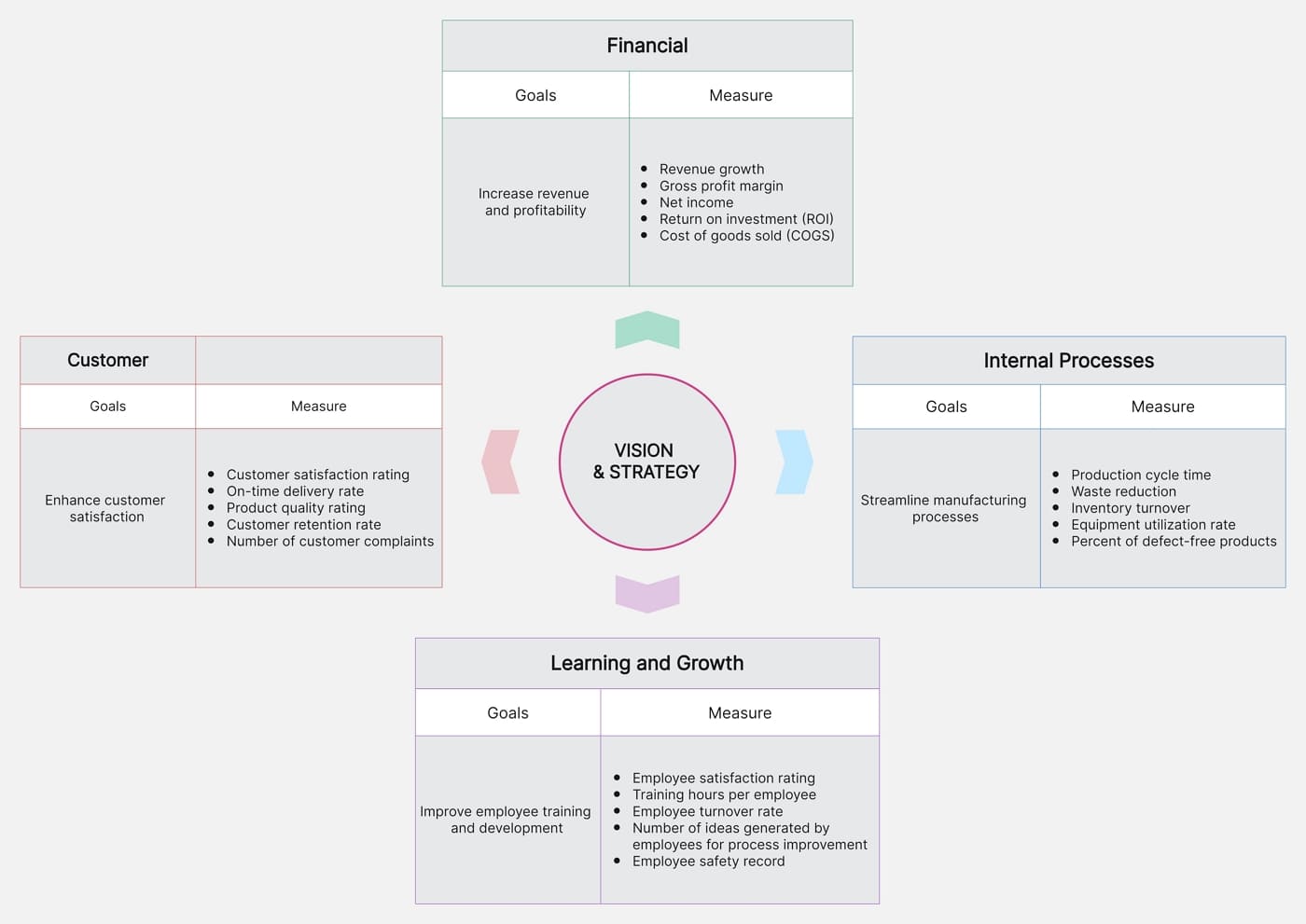
Balanced scorecard for an e-commerce business
You can also create scorecard examples like the one above, which uses light and pastel colors. Generally, it's visually appealing. The diagram provides multiple goals for every component, which you can do with your balanced scorecard. As you can see, the plans provided are more specific, which benefits the organization. The more detailed the inputs, the better the programs and activities will be implemented.
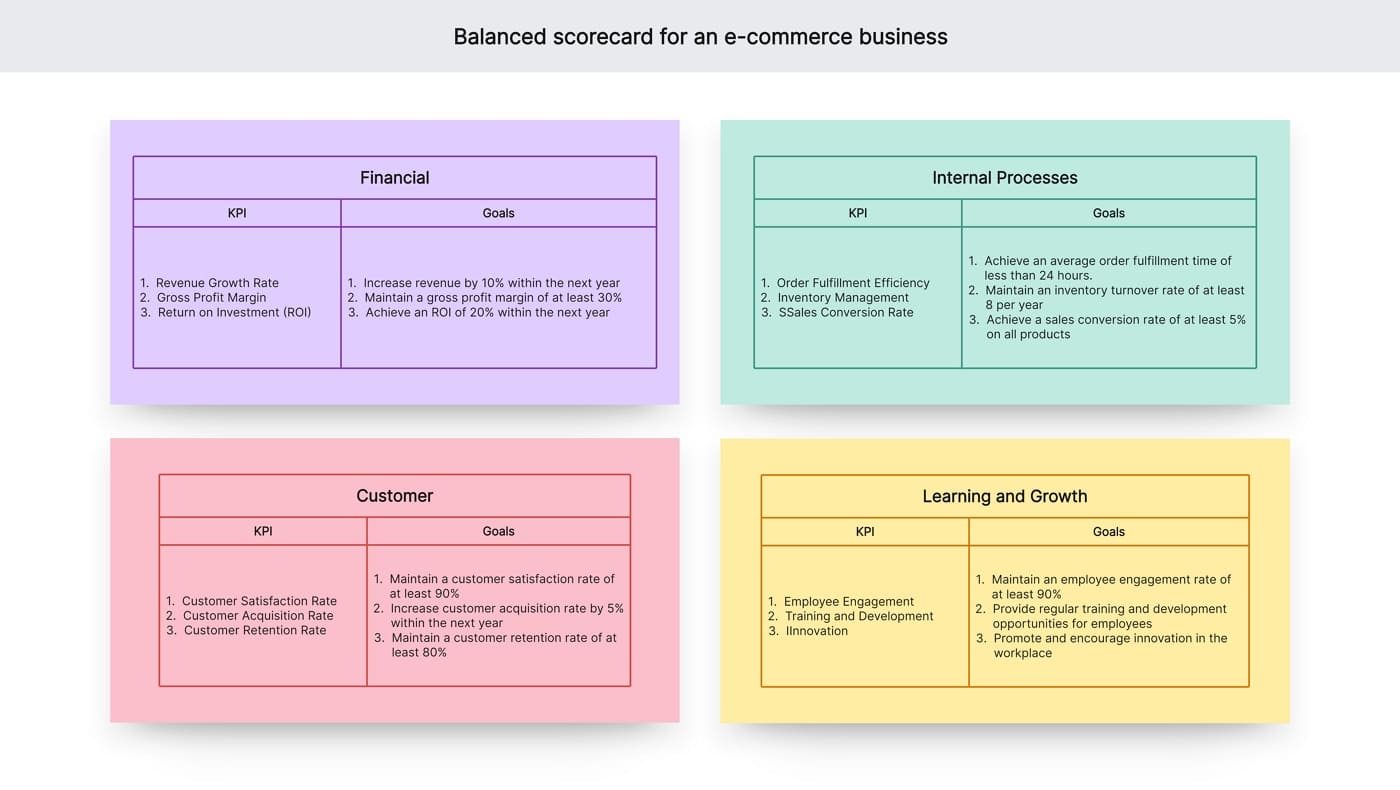
Balanced scorecard for a software company
Balanced scorecard examples of software companies can also look like the framework above. As you know, there is diagramming software today which allows you to create scorecards using different shapes. For every objective identified, specific goals are mentioned in the diagram which the software company must achieve. The good thing about the illustration above is it includes the target numbers and percentage the group aims to achieve. As a result, you'll have a precise gauge when implementing your marketing strategies.
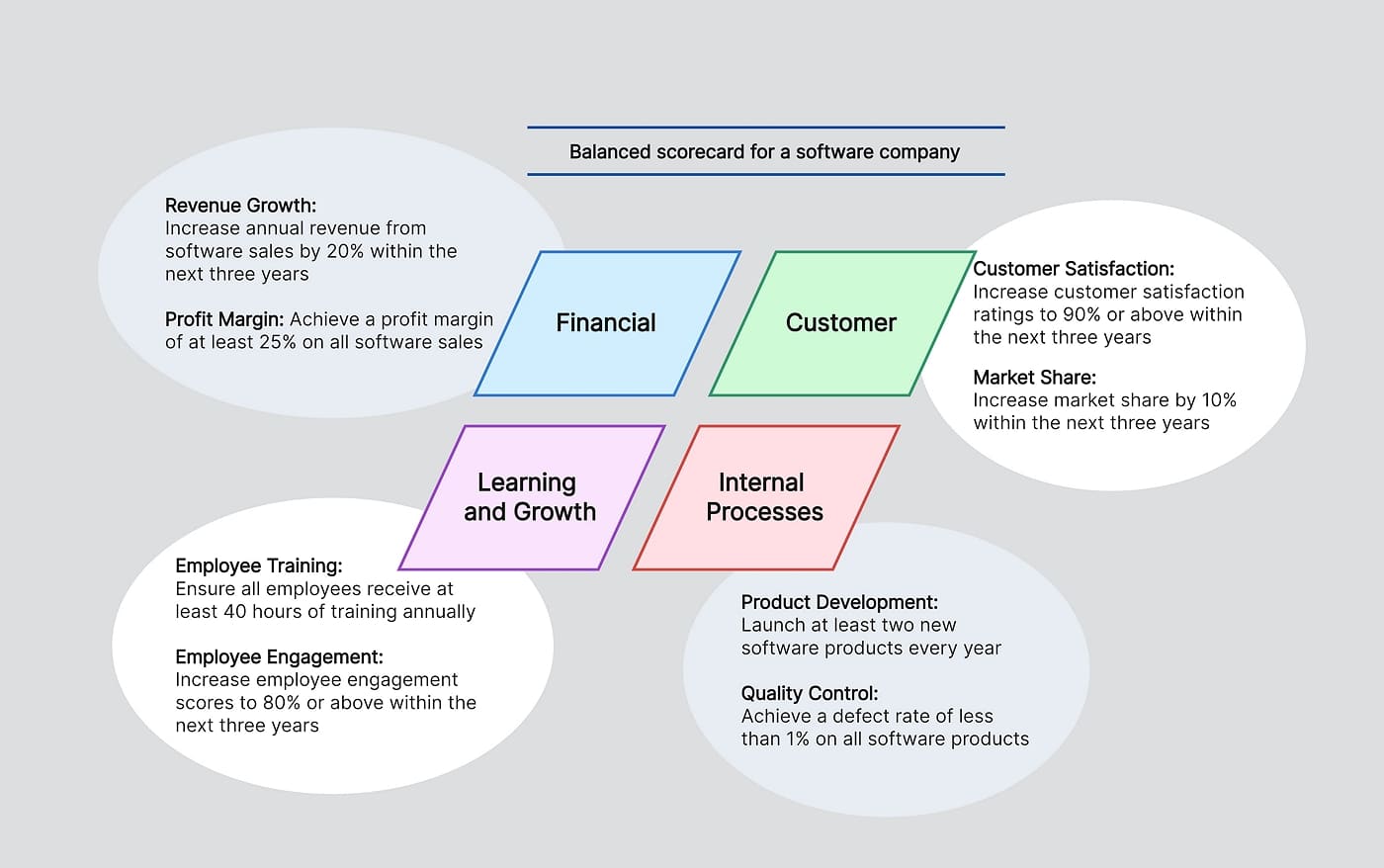
Balanced scorecard for the banking industry
You can use the diagram below as an example if you work in a bank. The framework is relatively straightforward and uses only light color tones for the boxes. Furthermore, it clearly illustrates the metrics the bank must use to measure the company's performance for every component. For example, the KPIs like processing time for loan applications and the number of errors in loan processing will be a significant factor in assessing the bank's operational efficiency and effectiveness. In short, you can incorporate internal business processes to evaluate your current progress.
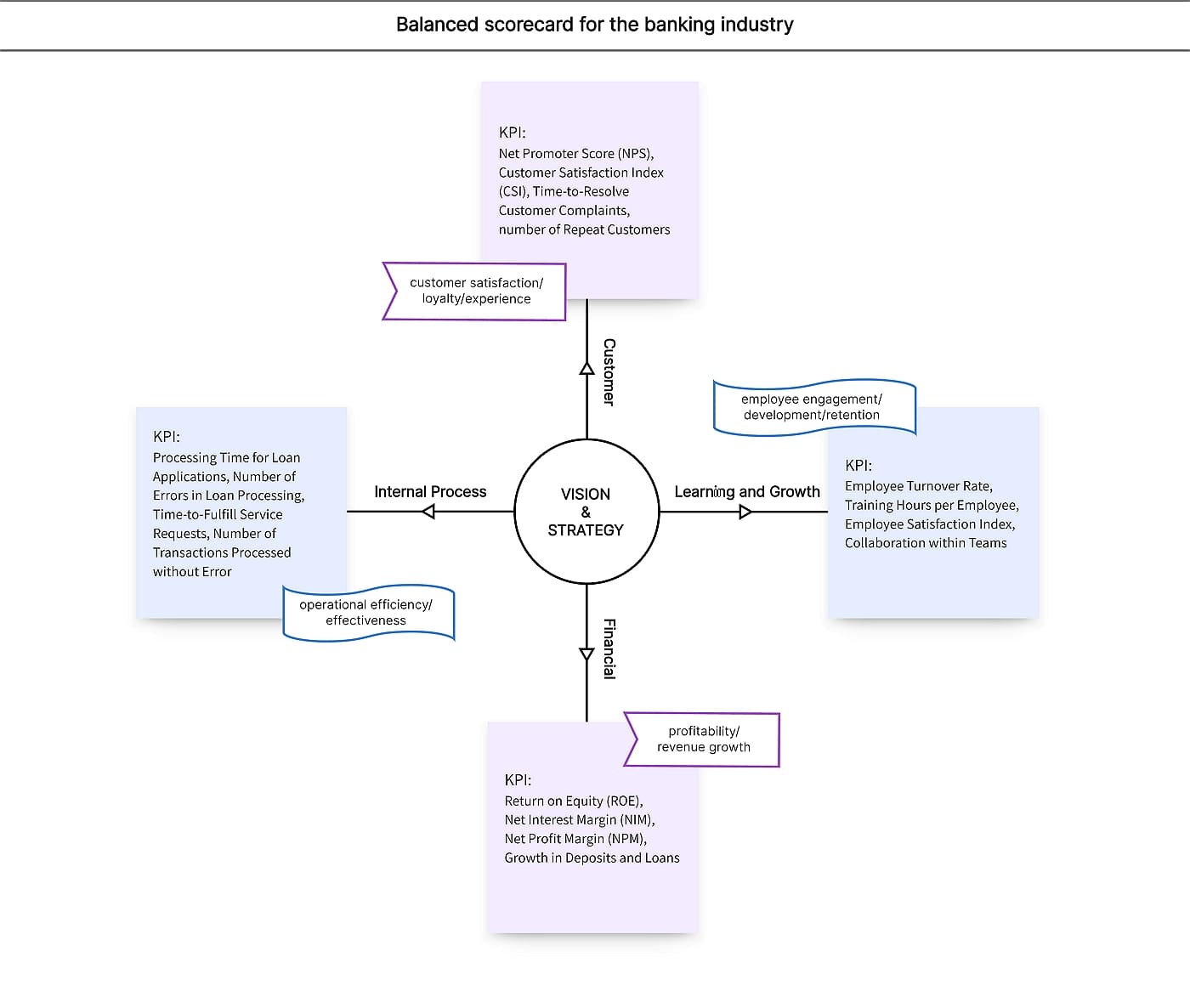
Balanced scorecard for a hotel chain
What's striking about the balanced scorecard illustration above is how it uses longer sentences rather than short phrases for its objectives

Balanced scorecard for the construction industry
At first glance, it's closely similar to mind maps. Yes, you can use mind mapping to create your balanced scorecard examples of companies in the construction industry. It's evident in the structure that the company focuses on various factors to assess its current performance in specific areas. For example, the team must look into its cost control, cash flow, ROI, profit margins, and revenue growth to see how they're performing financially. Of course, every construction company differs, so you may add or delete some inputs above.
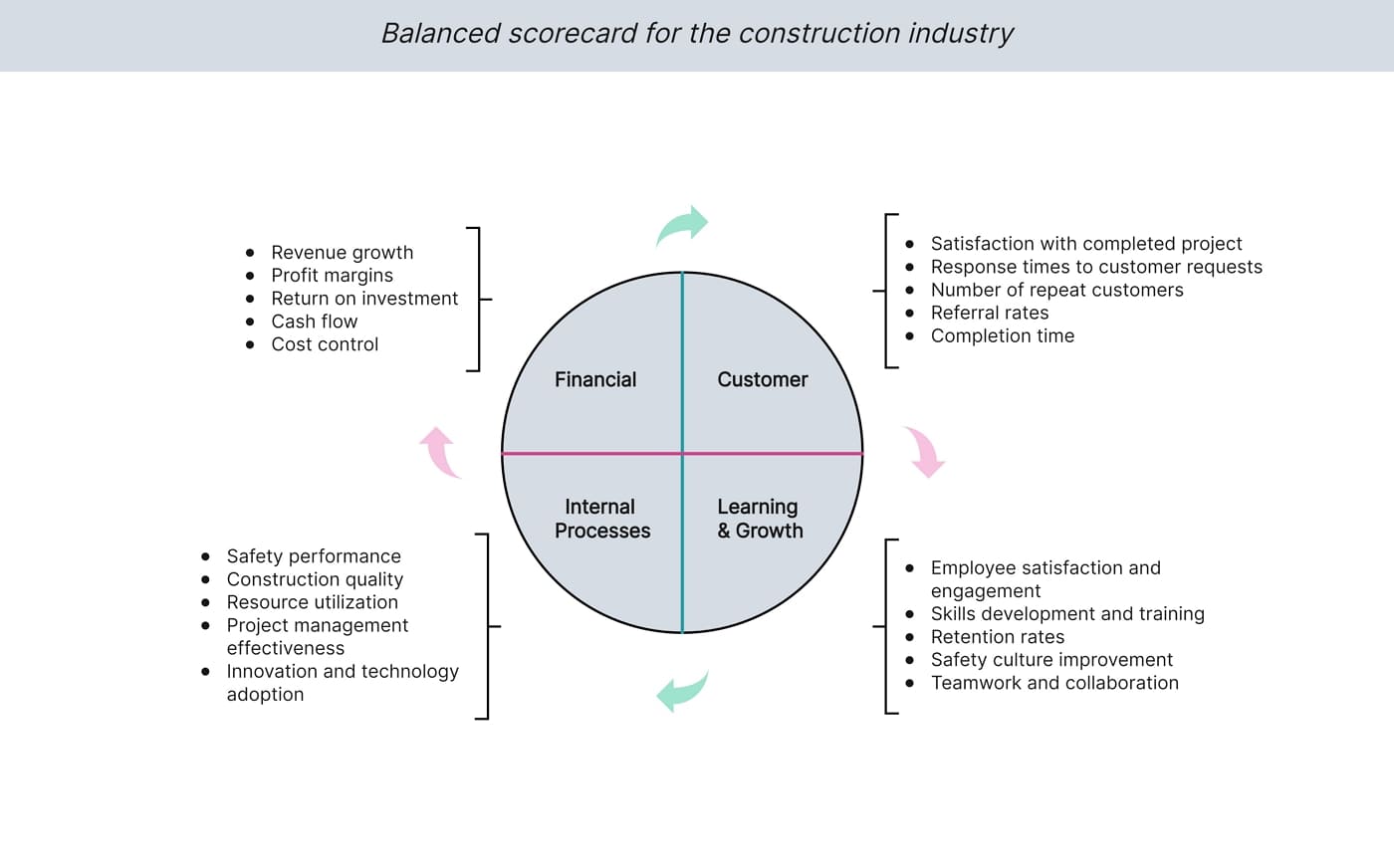
Balanced scorecard for the retail industry
The diagram above might be very simple, but the details placed for every component are concrete. There are several aspects under the financial component that they want to work on, including its sales revenue increasing by 10% and operating costs reducing by 5% within the next fiscal year. They even provide timelines under Learning and Growth which focuses significantly on employees' skills and training. Most importantly, collaboration must be present when creating a balanced scorecard. As you know, these diagrams will not be possible with a one-person-only approach.
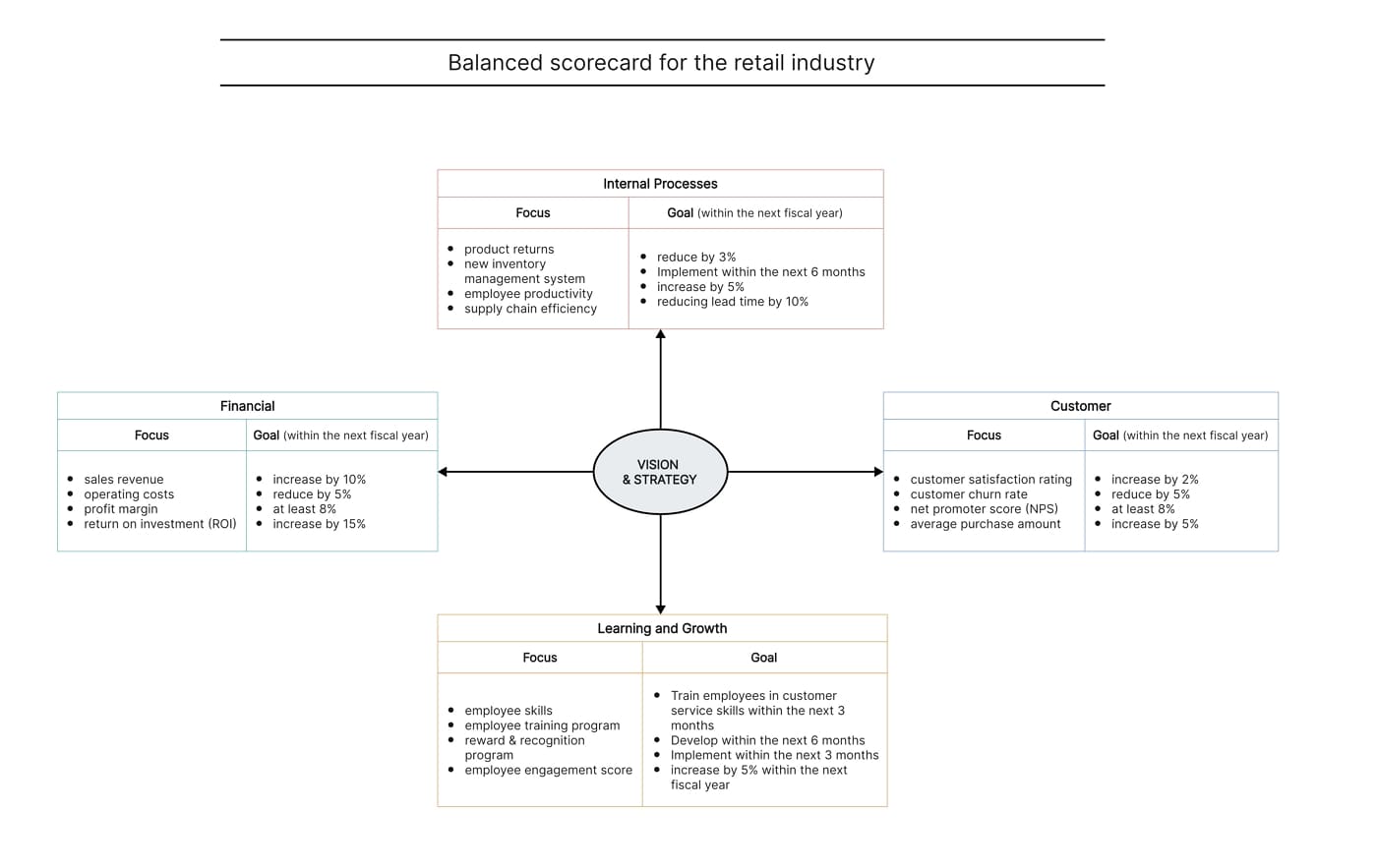
Get Free BSC Template and Edite It Online
Boardmix offers a variety of project templates to streamline your work process, one of which includes the Balanced Scorecard (BSC). The BSC is a strategic planning tool that helps organizations align business activities with their vision and strategy. To use the BSC template on Boardmix, please follow these steps.
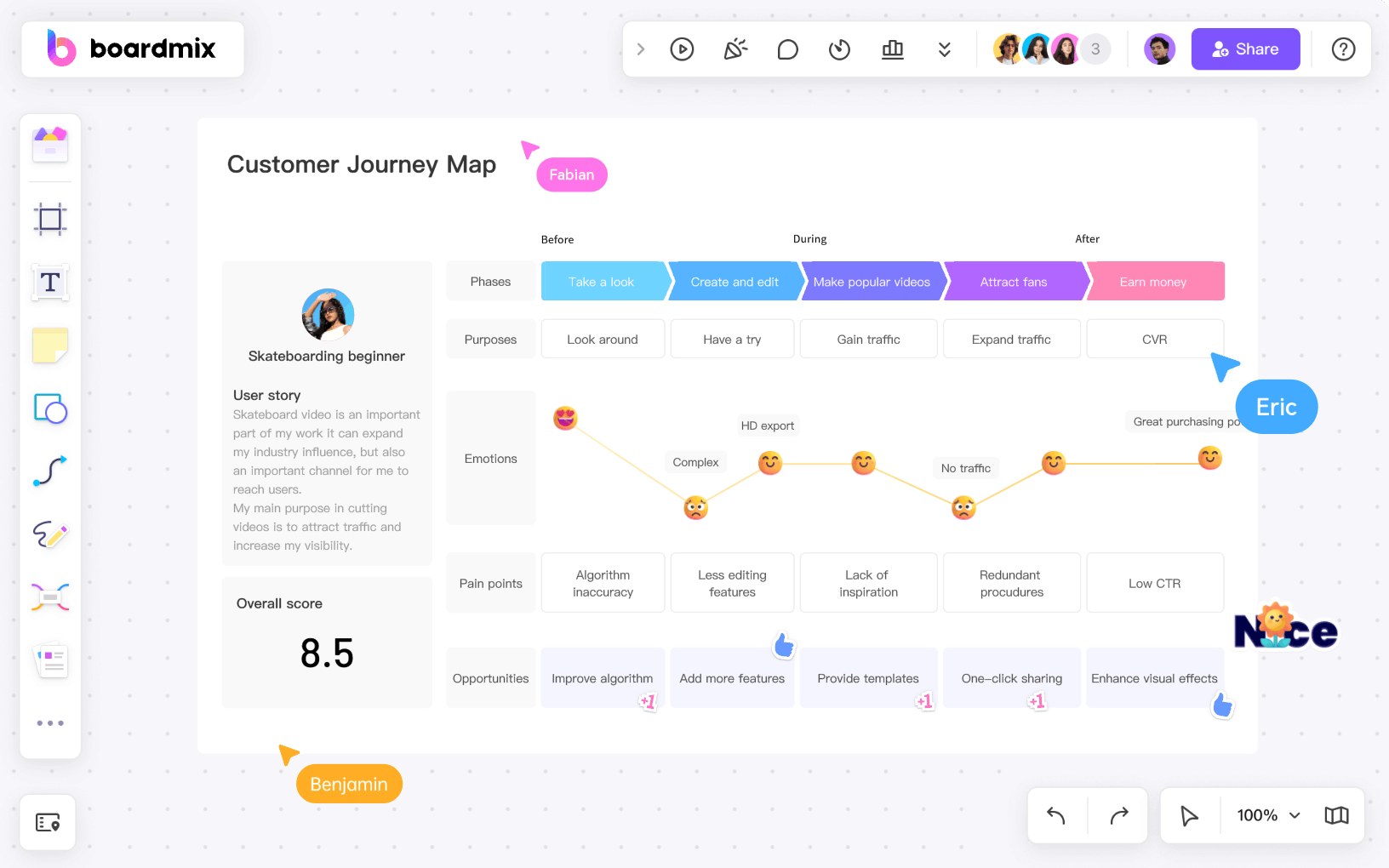
First, log in and select the Balanced Scorecard Template. After logging into Boardmix, navigate to the "New Project" tab. Under this tab, you'll find a variety of templates. Choose the "Balanced Scorecard" template from this selection.

Then, you can customize your project. Once you've selected the template, you will need to provide a name for your project. This name should reflect what you aim to achieve with your BSC, for easy future reference.
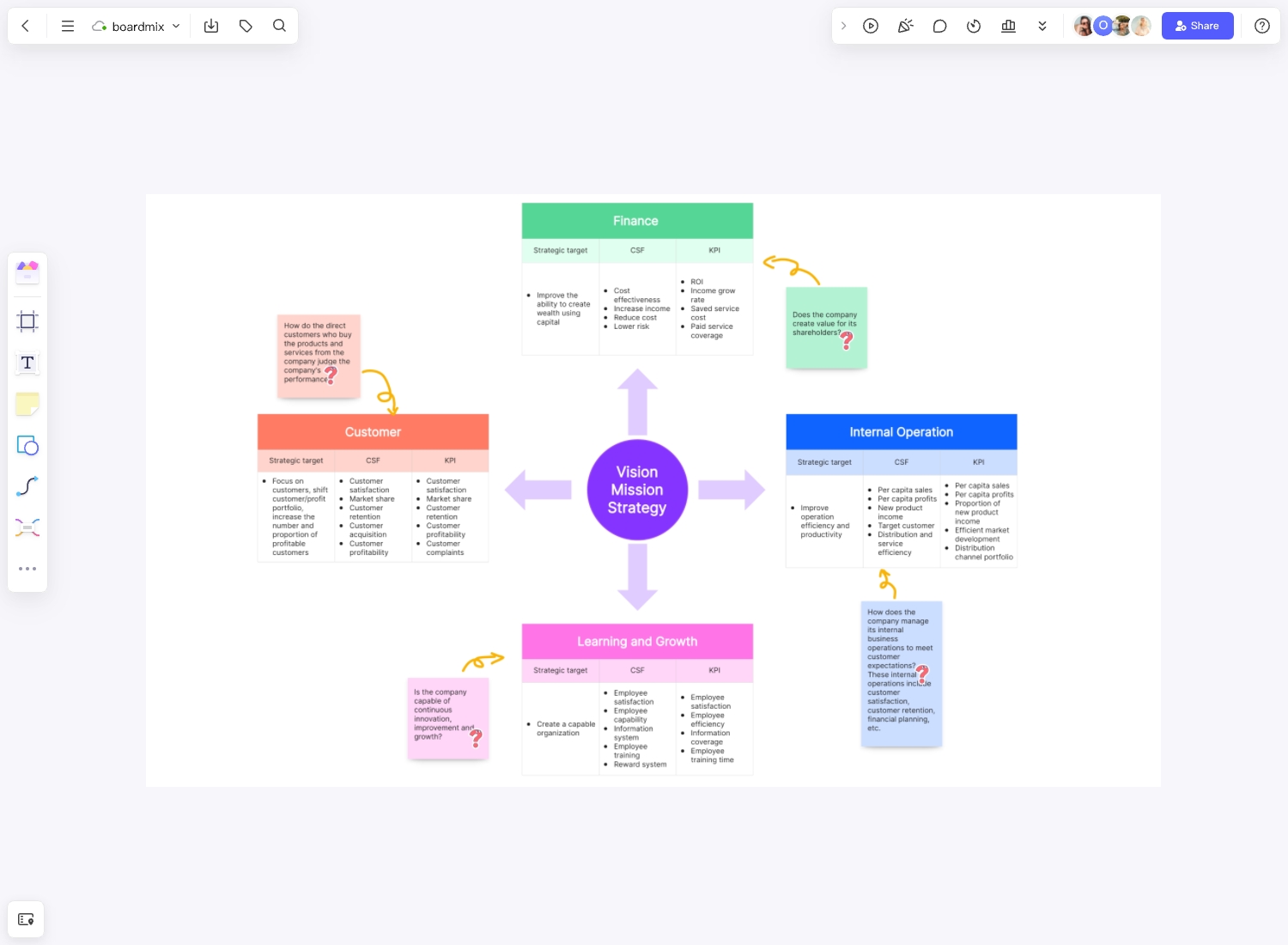
Using the BSC template on Boardmix simplifies the process of creating a Balanced Scorecard. It provides an organized framework within which you can align your strategic objectives with measurable KPIs, all within a collaborative and user-friendly platform. Start and create your Balanced Scorecard for free on Boardmix!













